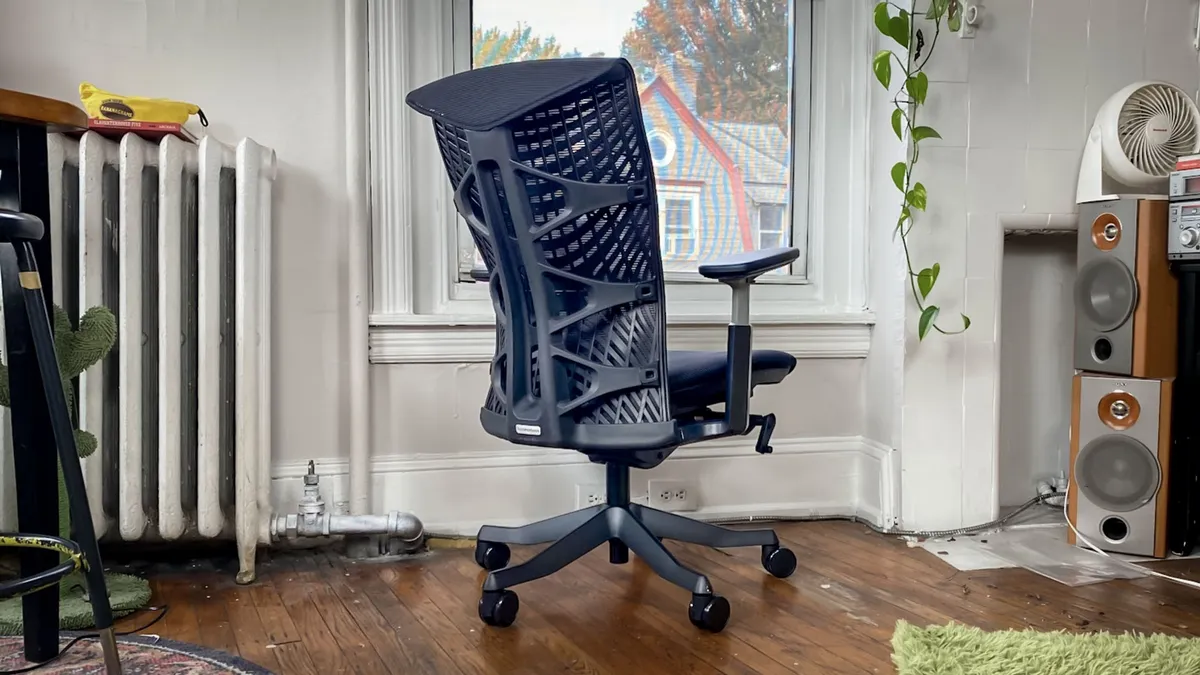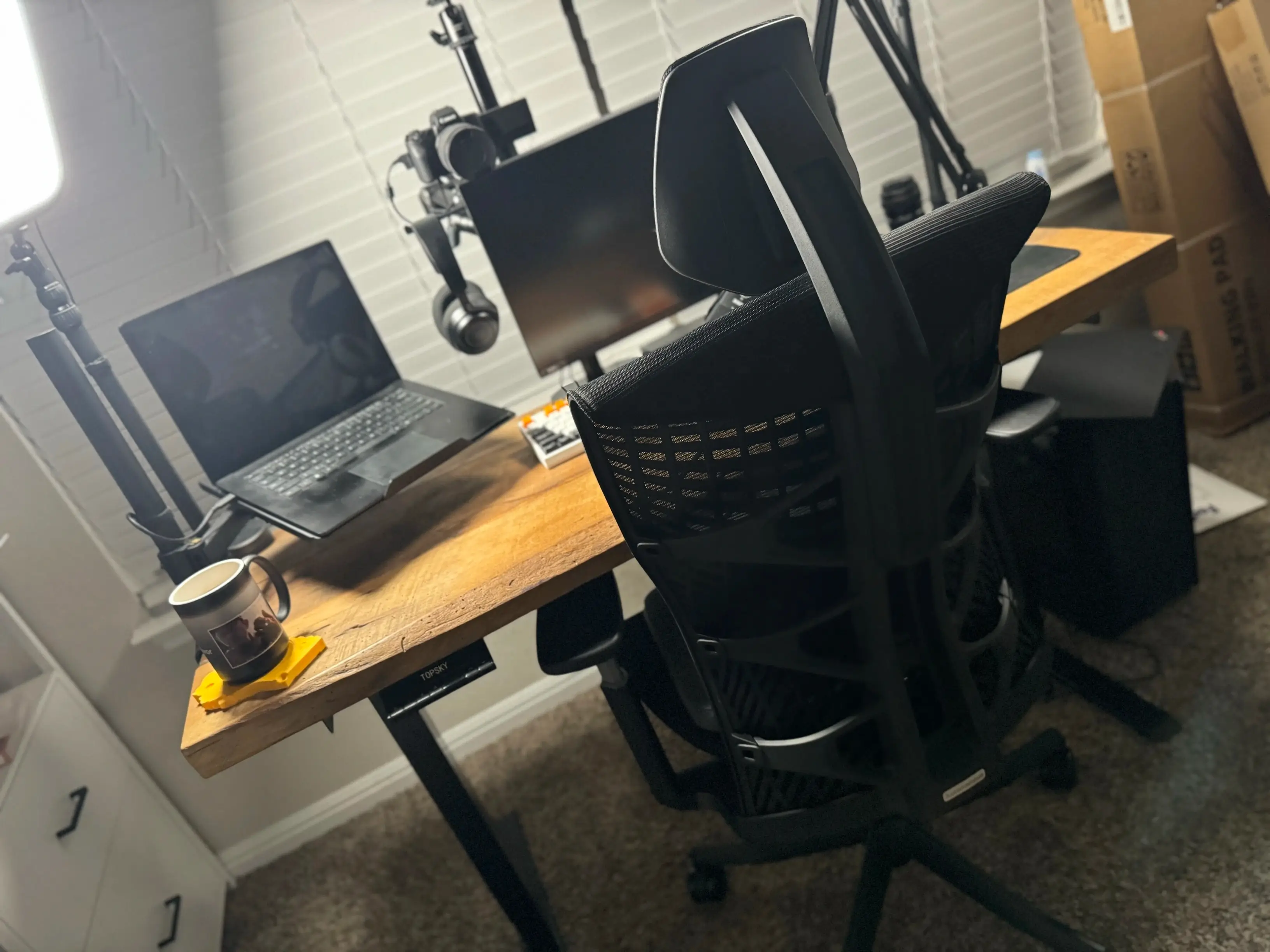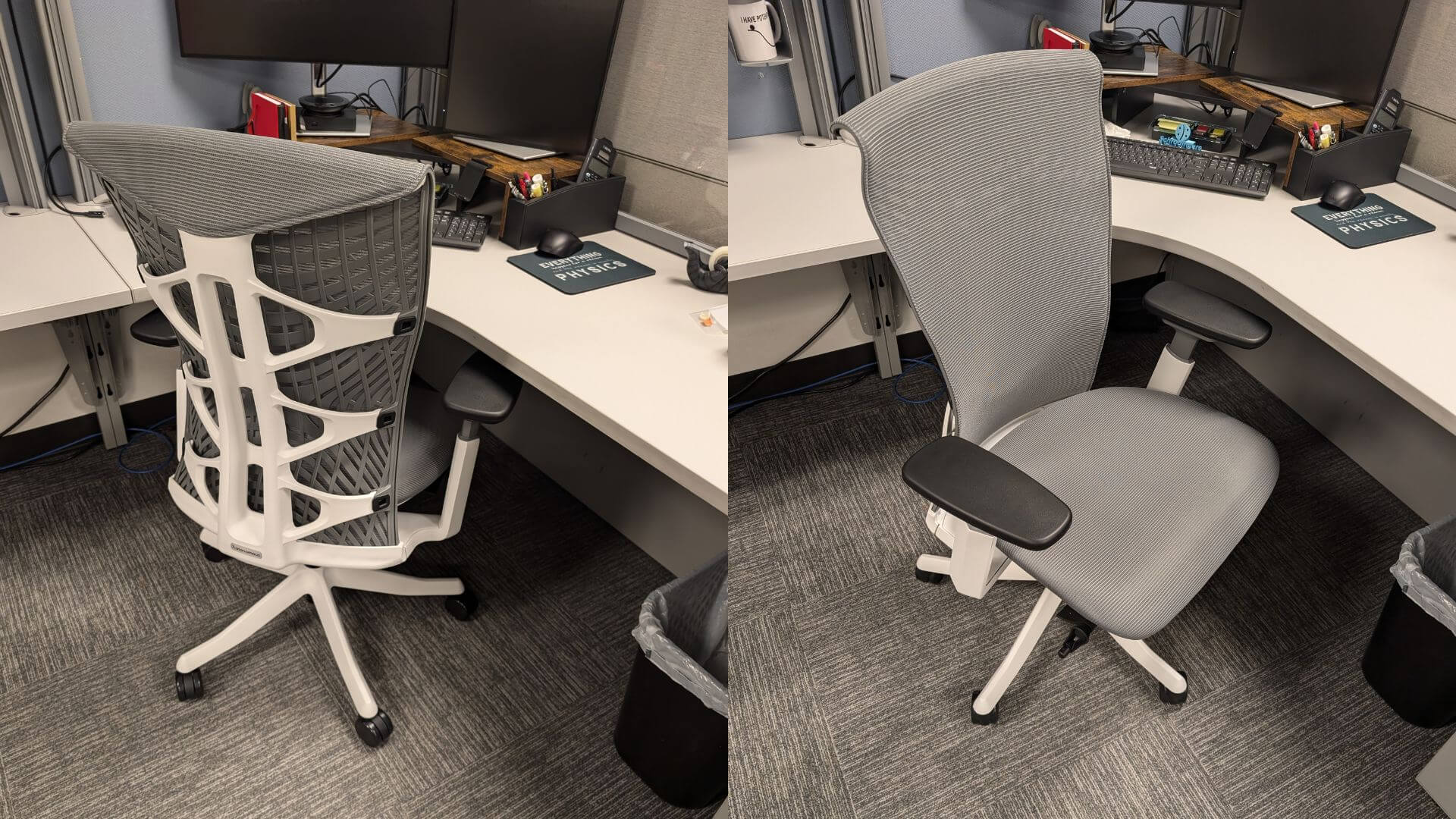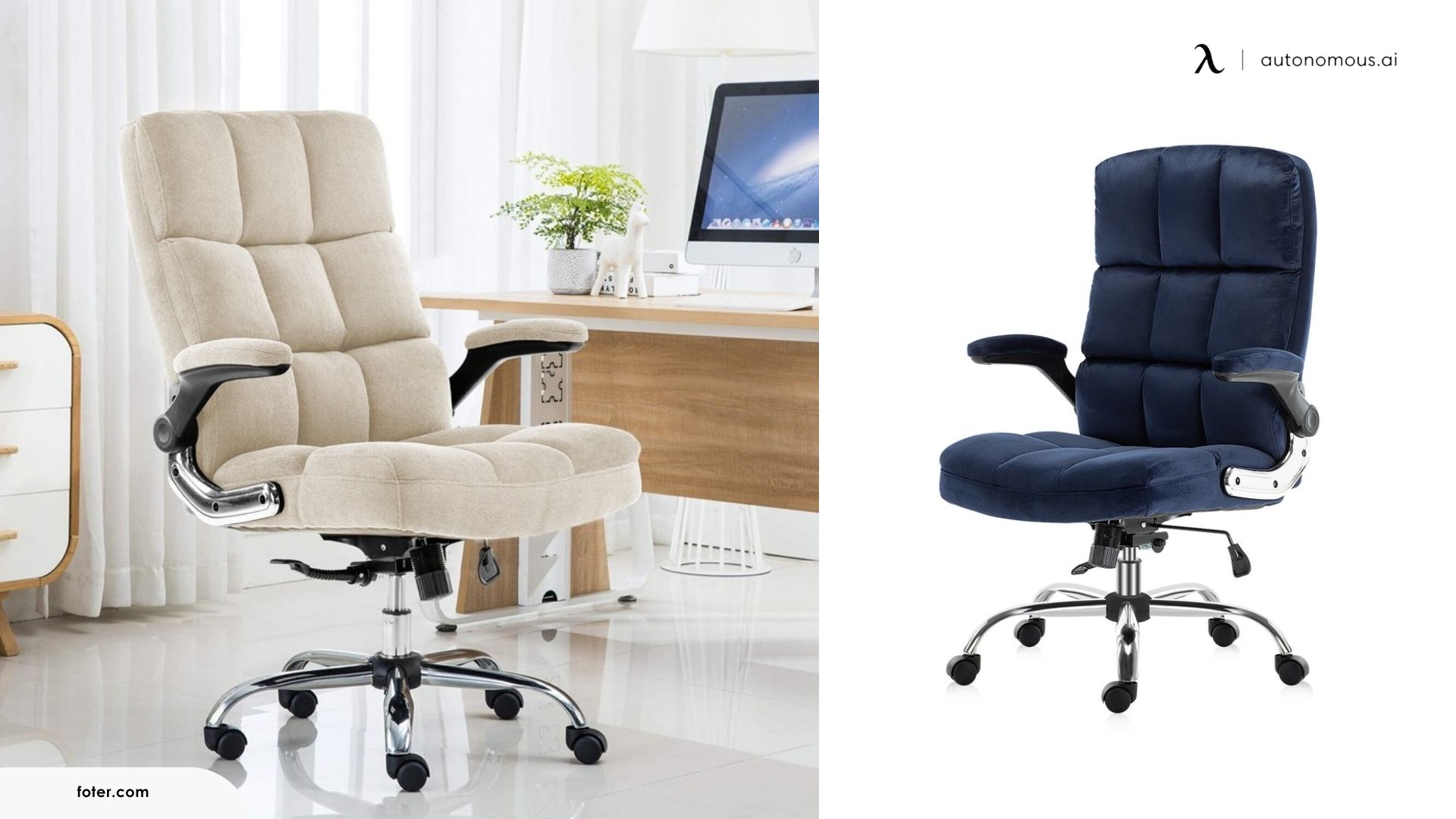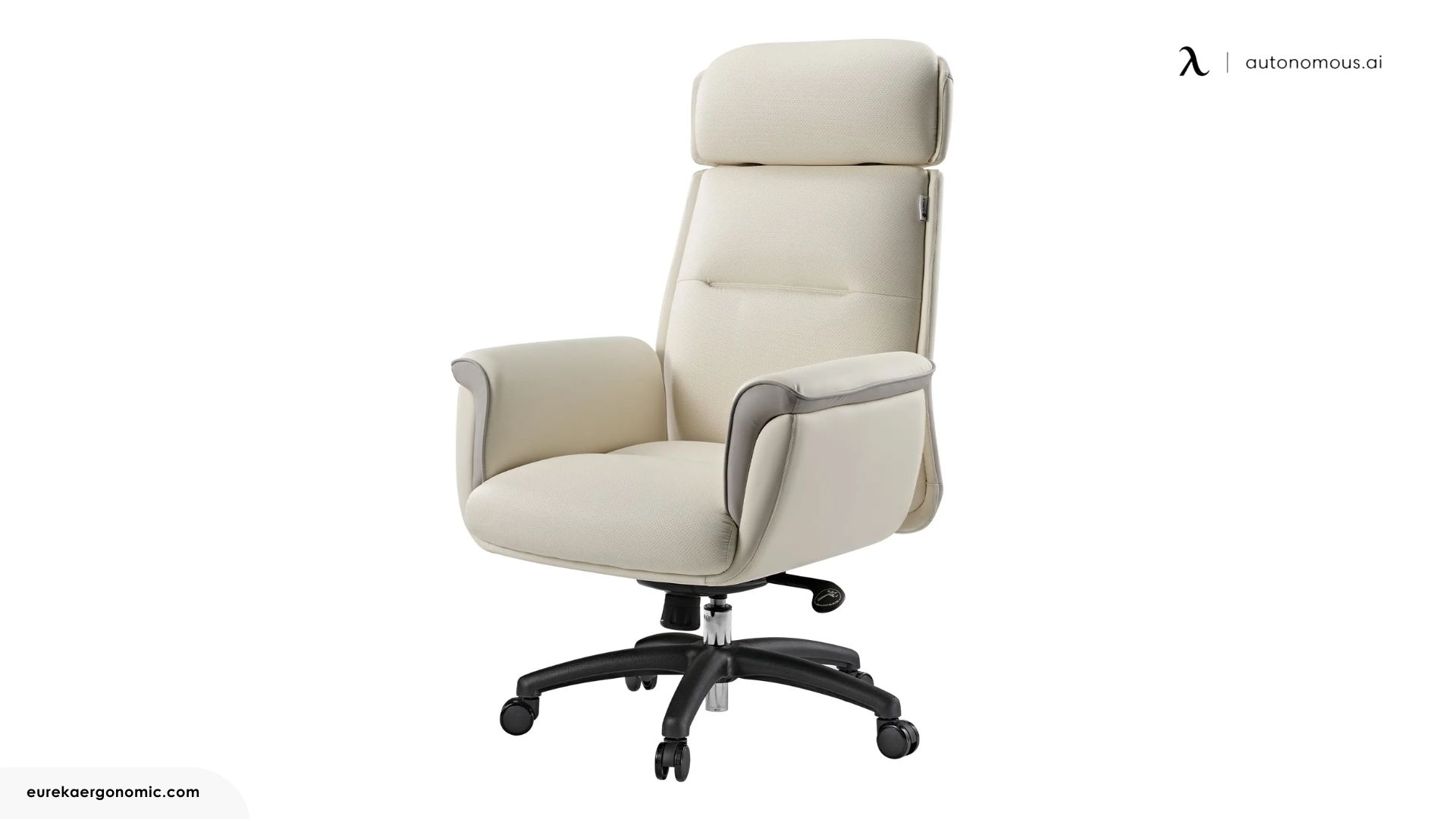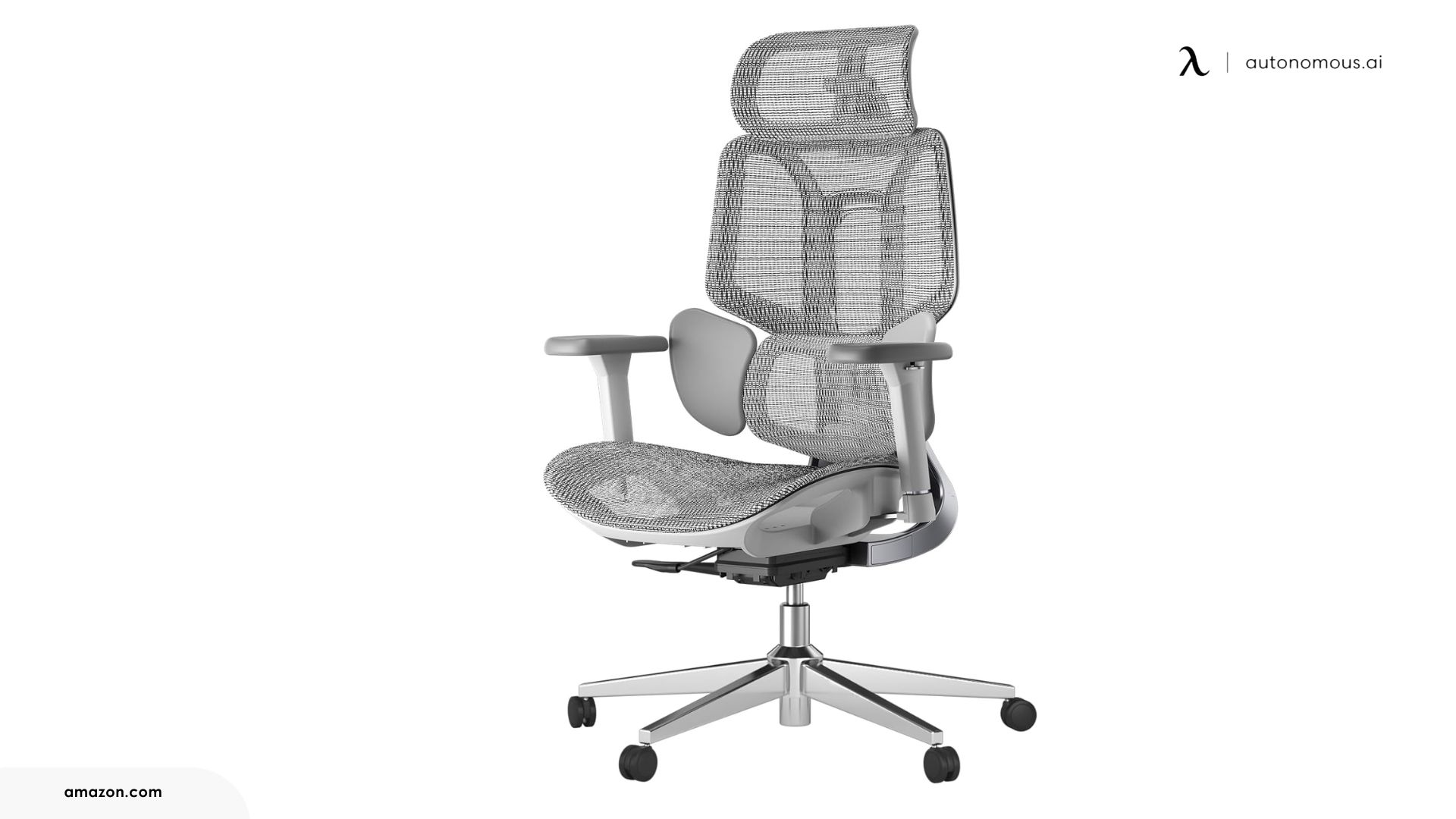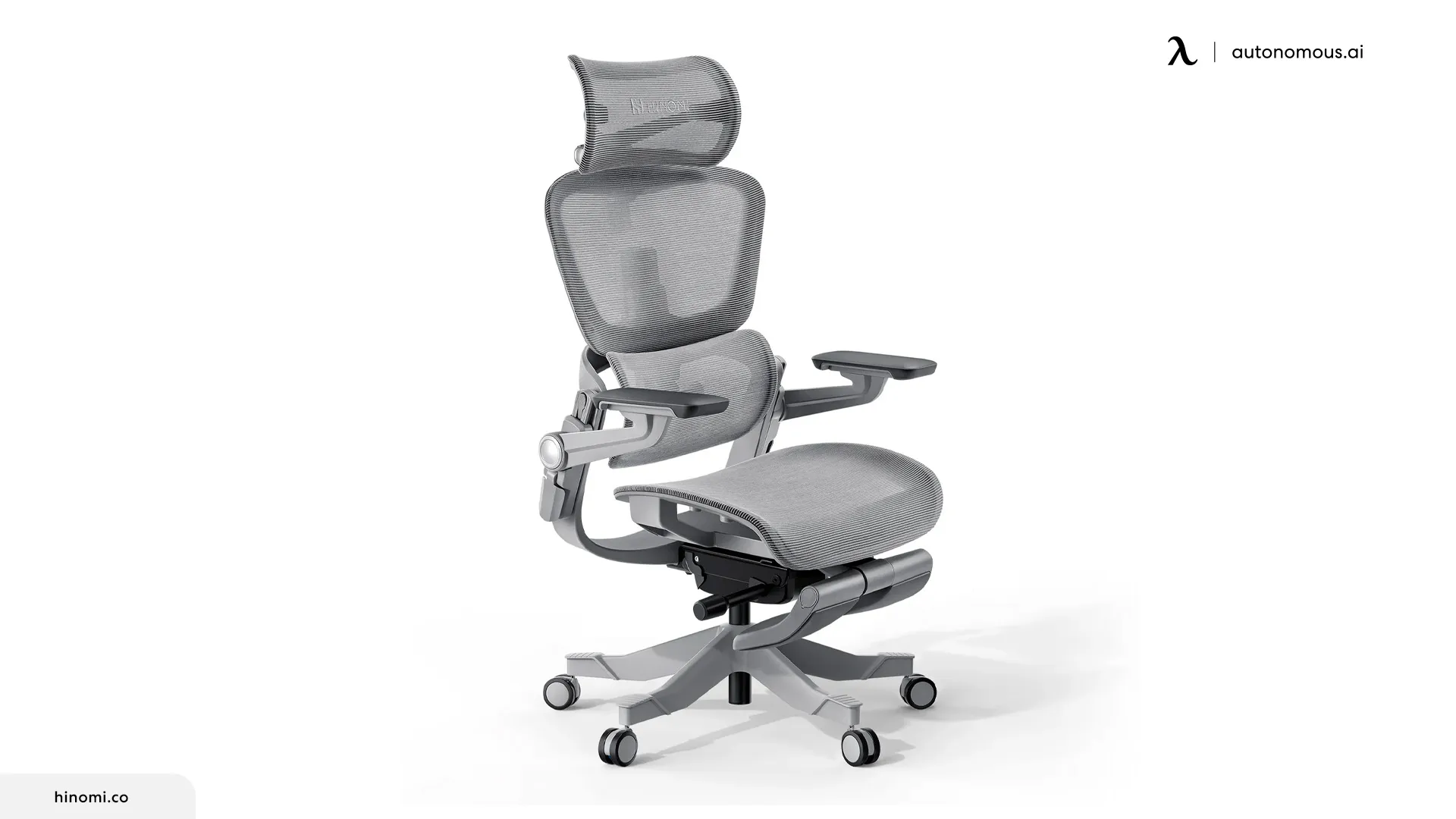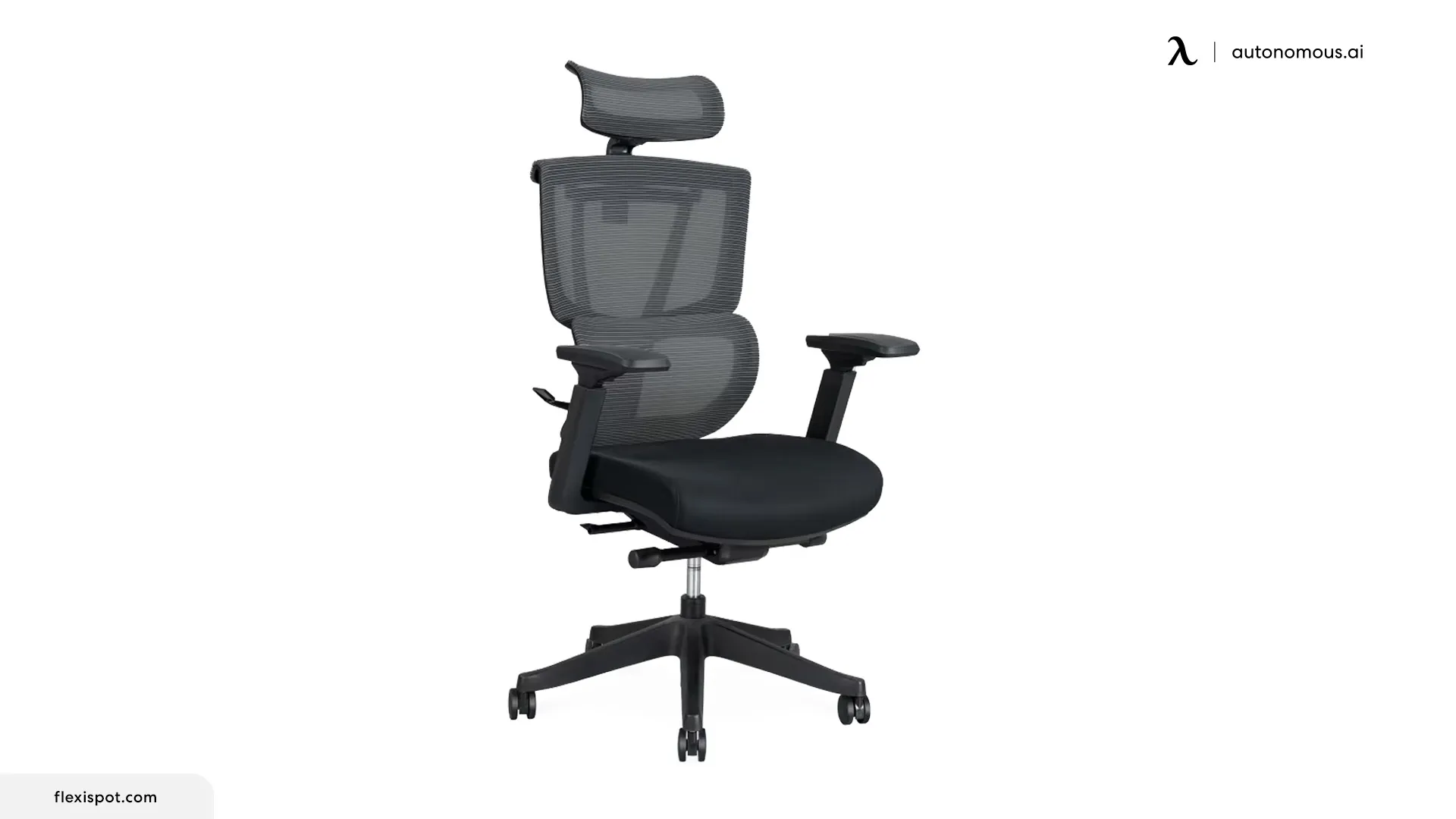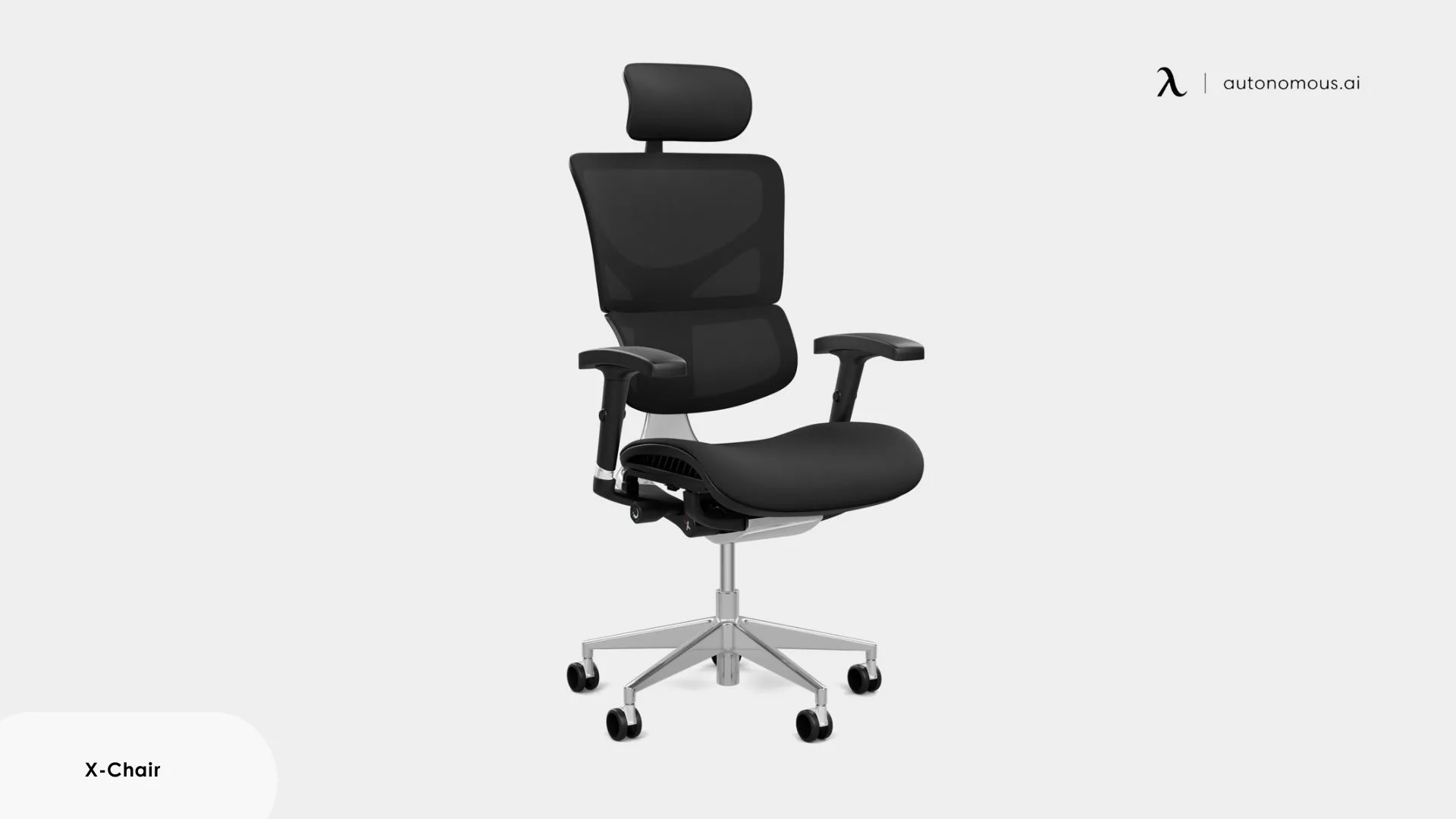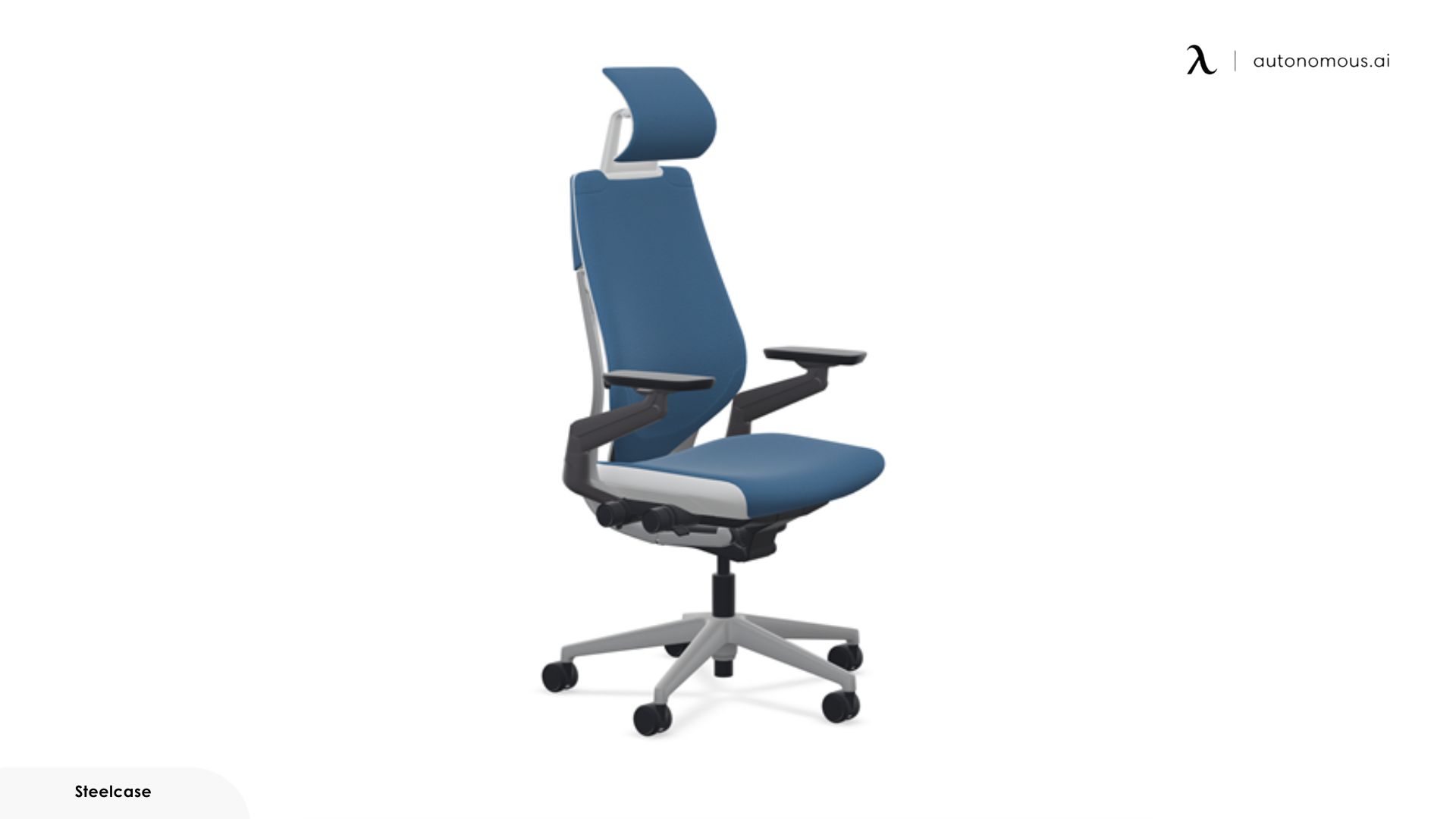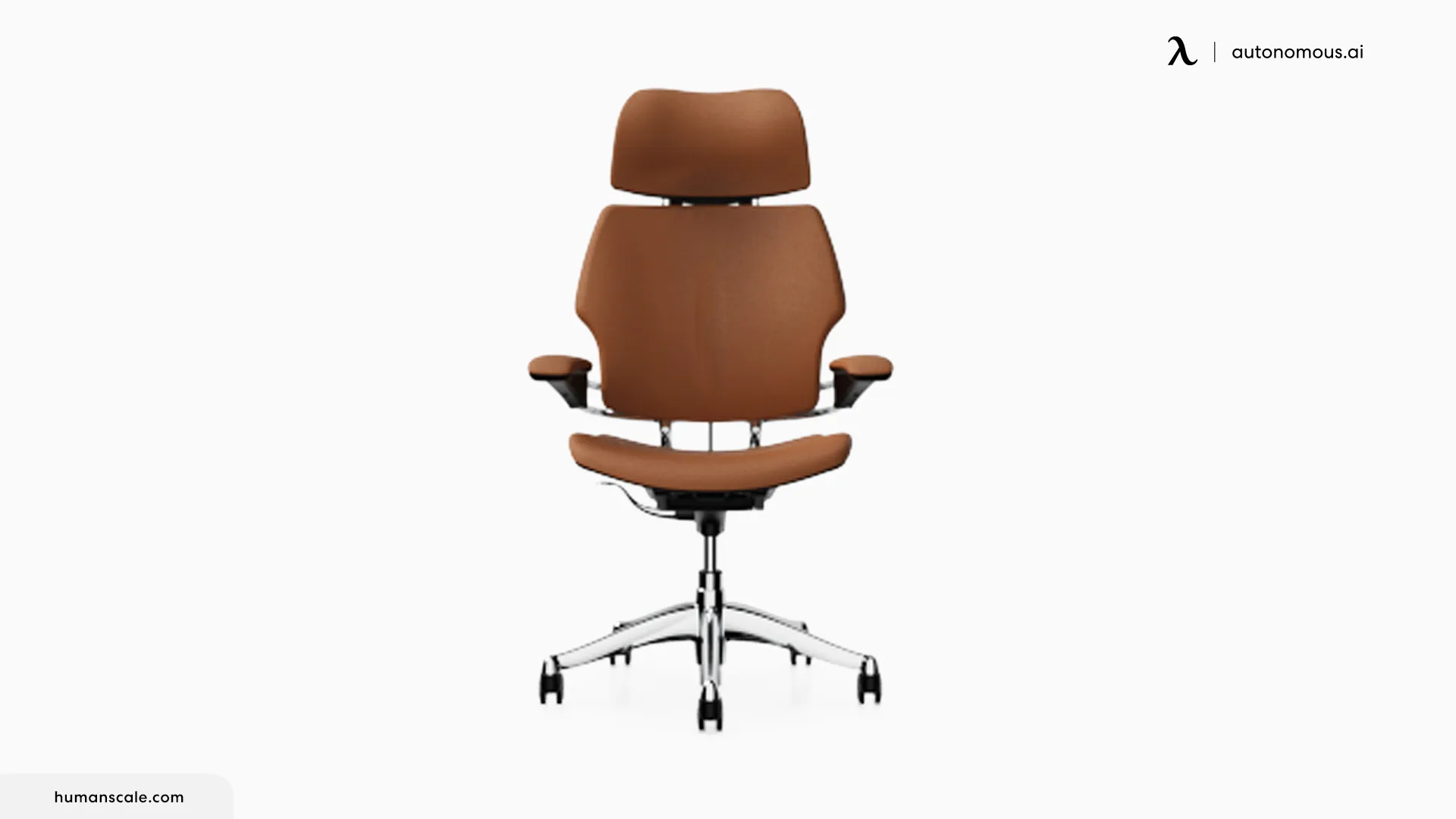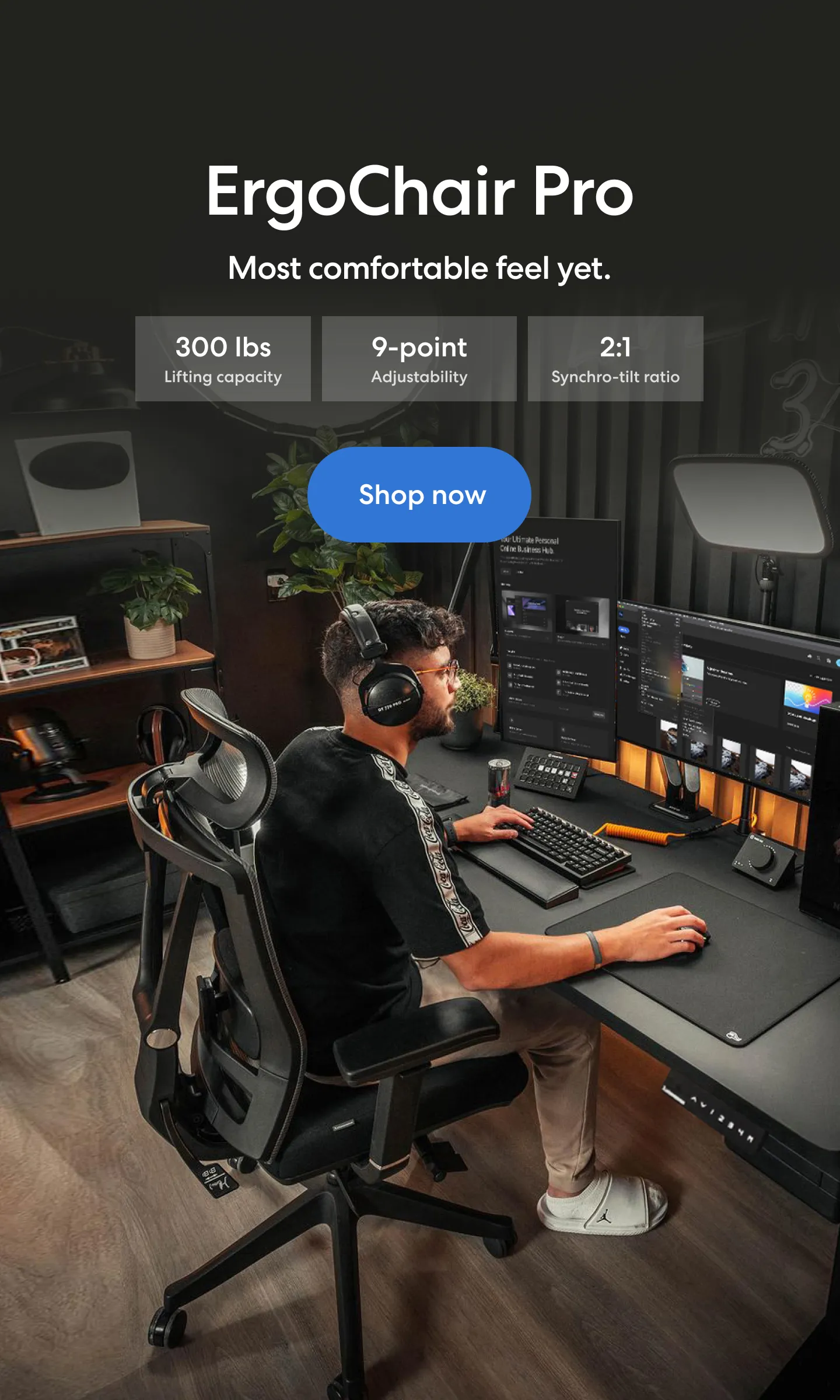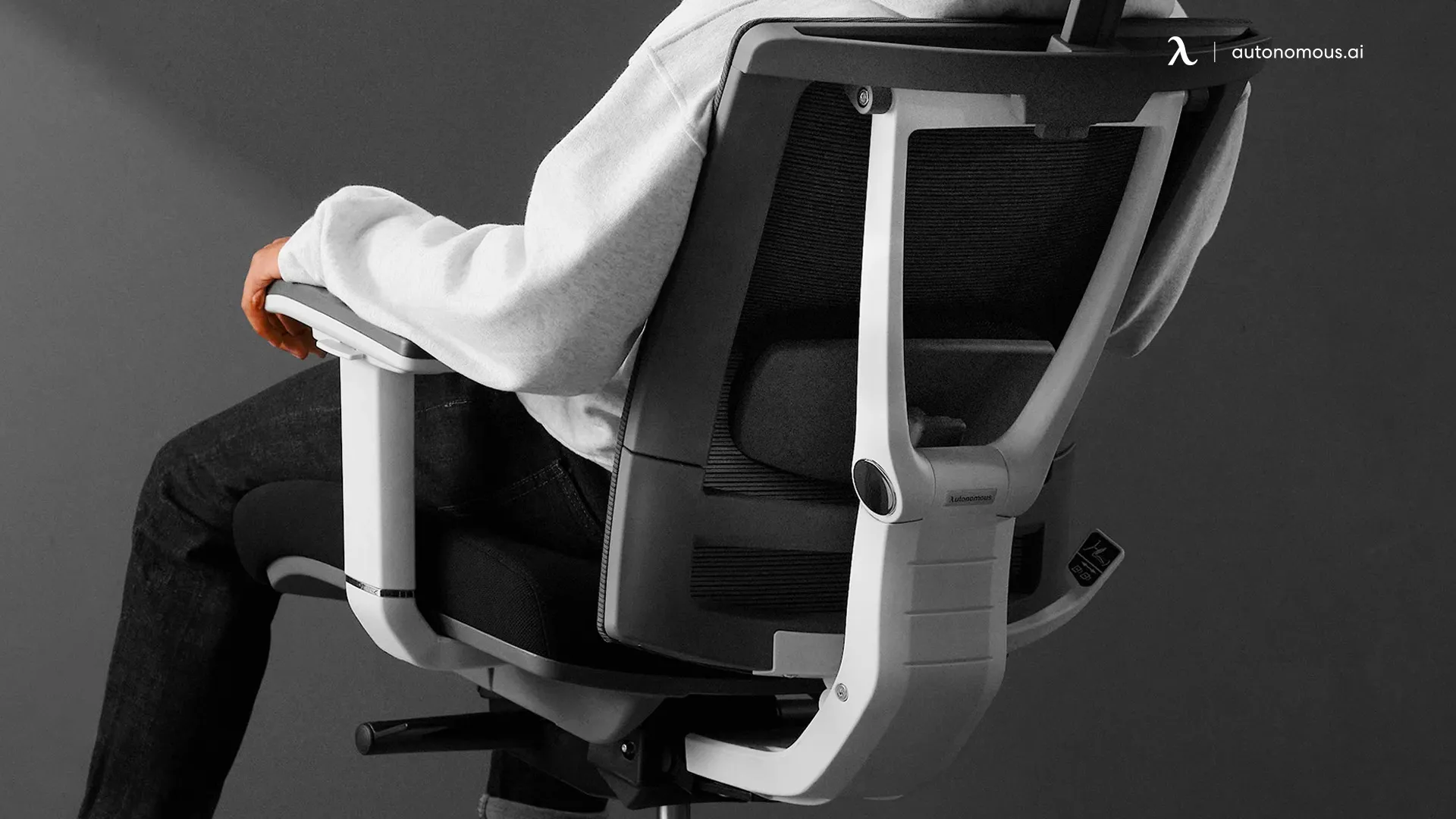
The Best 10 Orthopedic Office Chairs For Back Pain
Table of Contents
- What Is An Orthopedic Office Chair?
- Key Features To Look For In An Orthopedic Office Chair
- The Best Orthopedic Office Chairs For Back Pain Relief
- 1. ErgoChair Pro
- 2. ErgoChair Ultra 2
- 3. Plush Orthopedic Computer Chair
- 4. Eureka Ergonomic Home Office Sofa Chair
- 5. Hbada E3 Air Ergonomic Office Chair
- 6. HINOMI H1 Pro V2 Ergonomic Chair
- 7. FlexiSpot Premium Ergo Office Chair (C7)
- 8. X-Chair X3 Management
- 9. Steelcase Gesture
- 10. Humanscale Freedom Chair
- Additional Tips For Managing Back Pain While Sitting
- FAQs
- Conclusion
Sitting for long hours might feel productive, but it often comes at the cost of our spine. Over time, the wrong office chair can lead to poor posture, persistent back pain, and even long-term spinal issues. That’s where orthopedic chairs come in—not just as ergonomic upgrades, but as essential tools for comfort and spine health.
Unlike standard chairs, orthopedic office chairs are thoughtfully designed to support your natural alignment. Whether you're working from home or powering through hours at the office, investing in the right ergonomic office chair could mean the difference between thriving and simply getting by.
What Is An Orthopedic Office Chair?
An orthopedic office chair is purpose-built to alleviate back pain by supporting the spine’s natural curvature. It’s more than just ergonomic—it’s designed with medically-informed features that address chronic discomfort, postural fatigue, and muscle strain.
If you’re dealing with chronic discomfort or recovering from an injury, an orthopedic chair isn't just a nice-to-have—it’s essential.
Key Features To Look For In An Orthopedic Office Chair
Finding the right orthopedic office chair means looking beyond aesthetics and focusing on the features that protect your spine and enhance long-term comfort. The best orthopedic chairs combine smart design with advanced adjustability to support your body’s natural posture throughout the day.
Here’s what to pay attention to:
1. Adjustable Lumbar Support
This is non-negotiable. A truly orthopedic chair must support the natural curve of your lower spine (lumbar region). Look for an orthopedic office chair that allows you to adjust the height and depth of lumbar support to meet your back where it needs help the most.
Chairs with dynamic lumbar systems respond to your movement and help reduce pressure throughout the day.
Additionally, if you need extra cushioning, an orthopedic cushion for office chairs can provide tailbone and lumbar support for extended sitting.
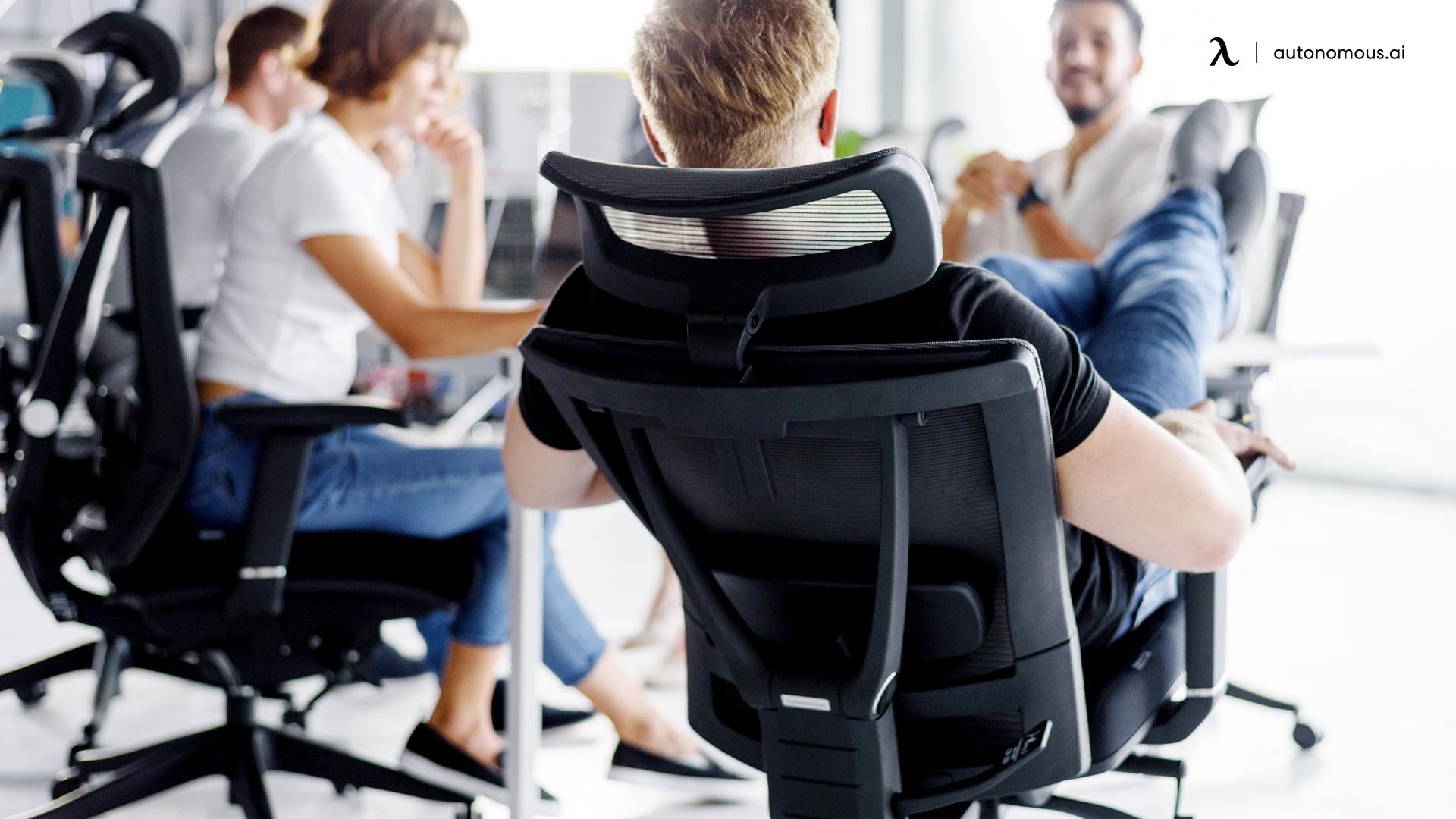
2. Seat Depth And Cushioning
A well-designed orthopedic chair distributes weight evenly to reduce pressure on your lower back and hips. Ideally, the seat depth should be adjustable to fit your leg length—too shallow and you’ll lack support; too deep and you’ll feel knee pressure
High-density or memory foam cushions are especially beneficial for tailbone or sciatica pain, offering better weight distribution and comfort.
If tailbone pain is your main concern, an orthopedic office chair for tailbone pain can provide the right level of cushioning.
3. Reclining And Tilt Lock
Orthopedic chairs should offer a smooth, supportive recline that allows you to shift postures throughout the day. A tilt-lock or tension adjustment feature lets you fine-tune how easily the chair leans back, helping you stay in control of your posture during work and rest.
If you prefer a chair that offers customizable reclining angles, check out this reclining ergonomic chair for added flexibility.
.webp)
4. Headrest And Neck Support
For those dealing with neck tension or upper back fatigue, a height- and angle-adjustable headrest can be a game-changer. It supports the cervical spine and helps reduce the likelihood of forward-head posture, a common contributor to chronic discomfort.
5. Armrest Adjustability
Arm support impacts your shoulders, neck, and even upper back. Look for chairs with 3D or 4D armrests that adjust in height, width, and angle.
This customization helps reduce strain in your upper body and keeps your arms relaxed, especially during typing or long meetings.
6. Material And Breathability
A mesh back provides airflow to reduce sweat and discomfort in warmer climates, while firm foam ensures consistent support without sagging over time. Look for upholstery that blends comfort with durability—whether that’s TPE, microfiber leather, or breathable mesh.
For those seeking a soft yet supportive feel, fabric office chairs offer a great option. The breathable nature of fabric allows for a cooler and more comfortable sitting experience, especially during long hours of use.
If you're looking for a chair that fits specific needs, such as a petite-friendly chair, an office chair for short people ensures proper alignment for smaller frames.
For those who enjoy added comfort, consider ergonomic chairs with leg rests, which provide extra support for your legs and feet during long sitting hours. You can explore a variety of options in our guide to ergonomic chairs with leg rests, ensuring you find the perfect balance of comfort and support.
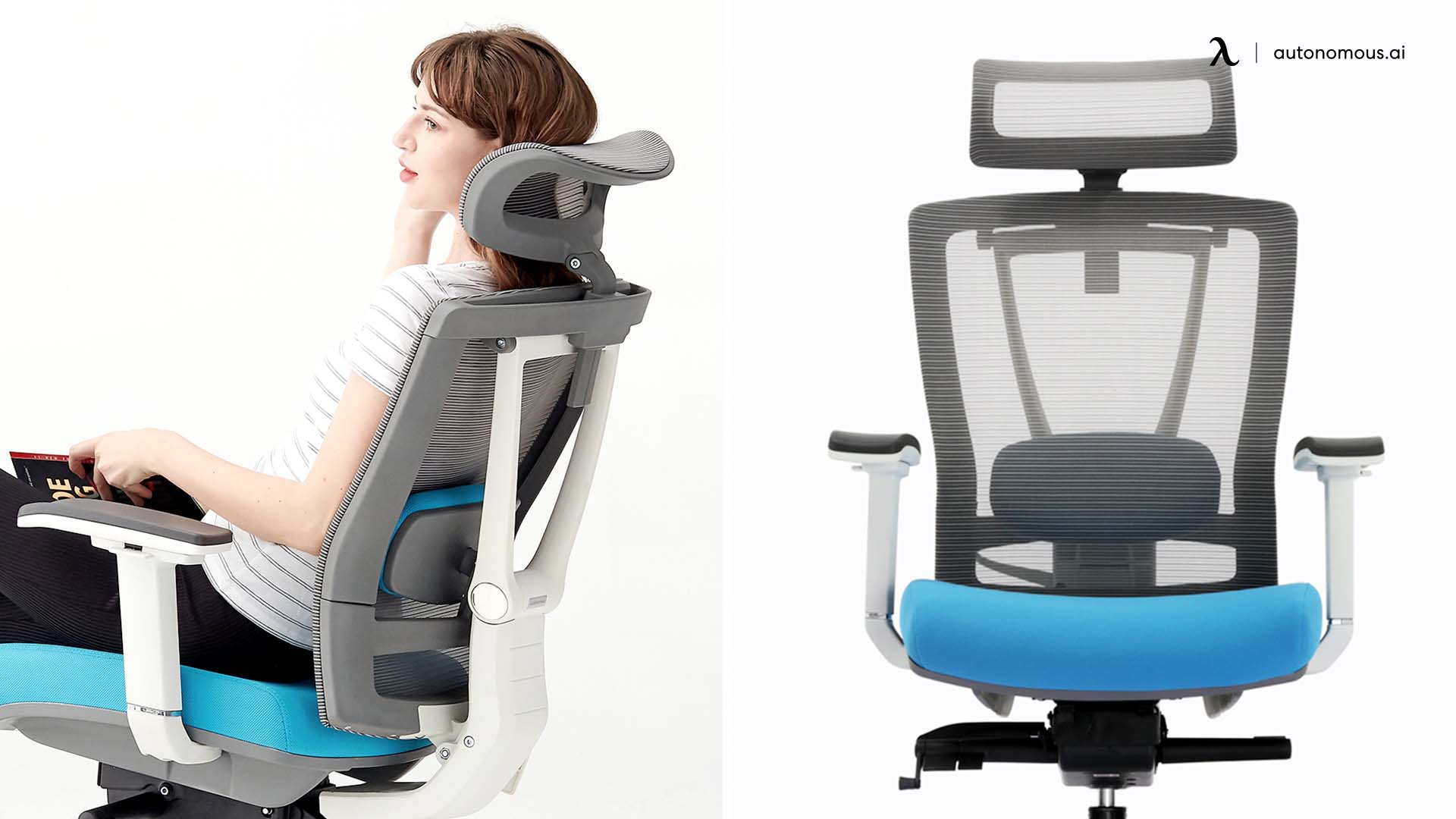
The Best Orthopedic Office Chairs For Back Pain Relief
Sitting for extended hours can lead to chronic discomfort and long-term health issues, making an orthopedic office chair essential for anyone dealing with back pain.
Unlike standard office chairs, these orthopedic office chairs for back pain focus on spinal alignment, pressure relief, and full adjustability to accommodate different body types and work environments.
Below is a detailed breakdown of some of the best orthopedic chairs for back pain, covering design, functionality, and overall ergonomic benefits.
1. ErgoChair Pro
The ErgoChair Pro brings robust ergonomic support to any workspace. With its breathable mesh back, adjustable lumbar system, and multiple tilt lock positions, it offers firm yet responsive support throughout the day. The seat depth and armrest adjustability allow users to fine-tune posture for personalized comfort.
This orthopedic chair is ideal for users who alternate between focused work and relaxed sitting, thanks to its flexible recline and smooth, supportive frame.
It’s particularly well-suited for those who experience occasional lower back stiffness and want a reliable chair that adapts to changing work demands.
2. ErgoChair Ultra 2
A high-performance chair built for intensive use, the ErgoChair Ultra 2 features a TPE lumbar support system that moves with your spine. Its wide recline range, headrest and seat depth adjustability, and full armrest articulation make it one of the most adaptive orthopedic chairs for back pain available.
Whether you're leaning forward in deep focus or reclining to relax, the chair’s dynamic frame supports each position. This design is especially effective for those with ongoing back pain who need a chair that offers relief without compromising mobility.
For additional relief, consider orthopedic back support for office chairs to enhance lumbar support.
3. Plush Orthopedic Computer Chair
For those who prefer soft, cushioned support, this orthopedic chair features high-density foam and a velvet fabric finish, offering a plush sitting experience. It comes in multiple colors, including gray and dark blue, making it a stylish option for home offices.
While the seat cushion’s coiled spring design provides good support, the lack of adjustable lumbar settings means it may not be suitable for users with severe lower back pain. The swivel base with 360-degree rotation allows for easy movement, but the fixed backrest limits customization.
Best suited for individuals who prioritize comfort over adjustability, this chair is an excellent option for those who need a soft, supportive seat for occasional work sessions.
4. Eureka Ergonomic Home Office Sofa Chair
This microfiber leather executive chair blends luxury with ergonomic support. The height-adjustable headrest, padded armrests, and reclining seat (98°–130°) ensure all-day comfort. The high-density foam filling evenly distributes weight, reducing pressure on the lower back.
Its sleek, executive design makes it a standout choice for home and corporate offices. The breathable, microfiber-reinforced leather offers durability and a soft-touch feel, but this ergonomic chair for back pain may not be as cooling as mesh-based chairs.
Ideal for professionals who want a premium orthopedic office chair for back pain with strong lumbar support and reclining features, this model balances style and functionality effectively.
5. Hbada E3 Air Ergonomic Office Chair
This orthopedic chair takes lumbar support to the next level with its T-shape support system and three-zone elastic lumbar adjustment. The floating wings rotate 40 degrees internally and externally, allowing users to customize lower back support based on their posture.
With 3D adjustable armrests, a dual-axis rotating headrest, and a seat depth adjustment of 1.97 inches, it accommodates different body shapes and seating preferences. The 140-degree reclining function allows users to transition from an upright working position to a relaxed, reclined posture for breaks.
For individuals who need dynamic lumbar support and a fully adjustable ergonomic experience, the Hbada E3 Air is one of the best orthopedic office chairs for back pain.
6. HINOMI H1 Pro V2 Ergonomic Chair
Designed with a split backrest and auto-adjusting lumbar system, the H1 Pro V2 takes spinal alignment seriously. Its 4D armrests, 3-stage headrest, and independently adjustable backrest sections provide a high level of customization.
One standout feature is the flexible lumbar support that moves vertically and diagonally to follow your natural spine curve. This makes it a great orthopedic office chair for users dealing with both upper and lower back discomfort.
For larger users, an office chair 300 lbs weight capacity provides better support and durability.
7. FlexiSpot Premium Ergo Office Chair (C7)
The C7 delivers serious support with a focus on spine-friendly features. Its thick seat cushion and contoured backrest promote weight distribution, while the adjustable headrest and seat depth add extra comfort for taller users.
It also features synchronous tilt with tension control, allowing smooth reclining without losing lumbar support. The wide seat and sturdy frame make it a solid pick for both average and larger body types.
This orthopedic office chair for back pain is ideal for those who want a plush, supportive chair that blends orthopedic comfort with a modern aesthetic.
8. X-Chair X3 Management
The X3 blends executive styling with therapeutic function. Its proprietary Dynamic Variable Lumbar (DVL) support system automatically adjusts as you move, reducing pressure on the lower spine. The performance fabric seat resists heat and stains, making it a durable option for long-term use.
Optional heat and massage add-ons transform this orthopedic computer chair into a mini wellness hub, perfect for high-stress work environments.
9. Steelcase Gesture
Built around extensive ergonomic research, the Steelcase Gesture supports a wide range of body types and working styles. Its 360-degree rotating arms mimic natural shoulder motion, and the flexible seat edge reduces leg pressure, making this orthopedic office chair for back pain excellent for long sessions.
Its LiveBack™ system responds to micro-movements in your spine, promoting continuous posture support throughout the day. While it comes at a premium price, its design is unmatched in long-term back support.
10. Humanscale Freedom Chair
The Humanscale Freedom Chair redefines simplicity in ergonomic design. With its weight-sensitive recline and synchronously adjustable armrests, it eliminates the need for constant manual adjustments. The self-adjusting backrest supports your spine in every position, encouraging natural movement throughout the day.
Its contoured cushions and optional headrest are designed to provide additional comfort for the neck and upper back, helping to alleviate tension in these areas. The chair's intuitive design allows for seamless adjustments to meet your unique needs, ensuring that your spine remains supported whether you're sitting upright or reclining during breaks.
This orthopedic computer chair is ideal for individuals who want a low-maintenance orthopedic chair with adaptive, all-day spinal support and a sleek, minimalist design.
Additional Tips For Managing Back Pain While Sitting
Even with the best orthopedic office chair, back pain can still creep in if you're not sitting with intention. A chair is only one part of the solution; how you use it and how you move throughout the day matter just as much.
Here are a few simple but powerful habits to adopt that complement your orthopedic chair setup:
1. Take Regular Breaks
Every 30 to 60 minutes, stand up and stretch. Even walking to refill your water bottle or doing light stretches can relieve lower back tension and boost circulation.
If you have a standing desk, alternate between sitting and standing throughout the day to reduce fatigue. To make the most of it, consider following our tips on using a standing desk for better posture and movement.
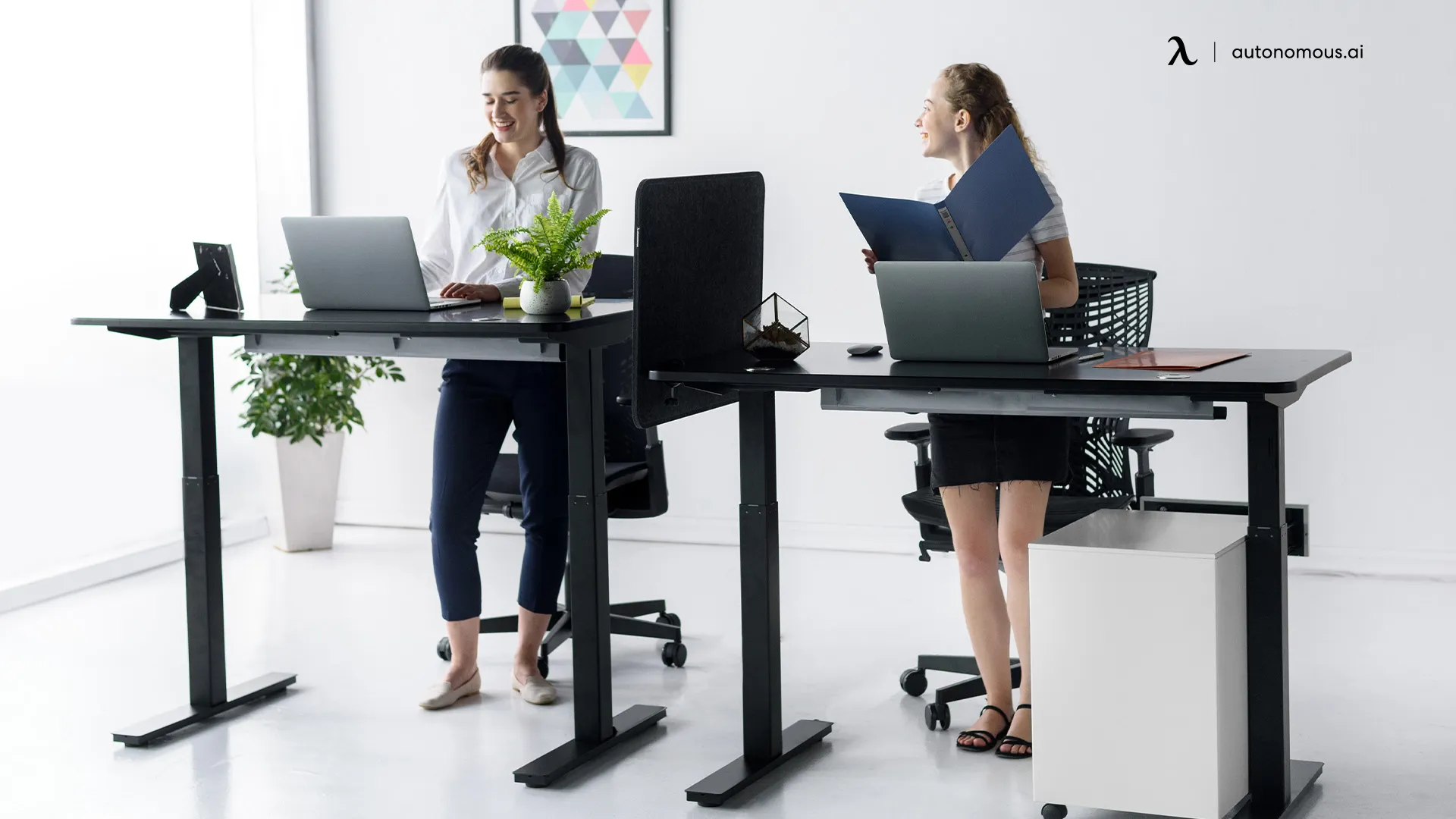
2. Use Additional Accessories
A lumbar cushion, ergonomic footrest, or memory foam seat pad can offer extra reinforcement where your orthopedic office chair alone may not be enough. For example, if you’re recovering from tailbone pain, a cut-out seat cushion can help relieve direct pressure while you sit.
If you prefer a more dynamic approach to sitting, an active sitting chair encourages movement, helping to engage your core muscles and reduce stiffness.
3. Incorporate Movement Into Your Workday
Sitting still for hours can worsen back pain. Consider active sitting, which allows for subtle movements that keep your spine and muscles engaged.
To learn more ways to incorporate motion into your routine, check out how to stay active at your desk for practical strategies that promote spinal health.
4. Maintain Proper Posture
Sit upright with your hips slightly higher than your knees and your back supported fully against the chair’s lumbar curve.
Keep your elbows at a 90-degree angle and your shoulders relaxed. If you tend to lean forward toward your screen, adjust your monitor height to reduce neck strain.
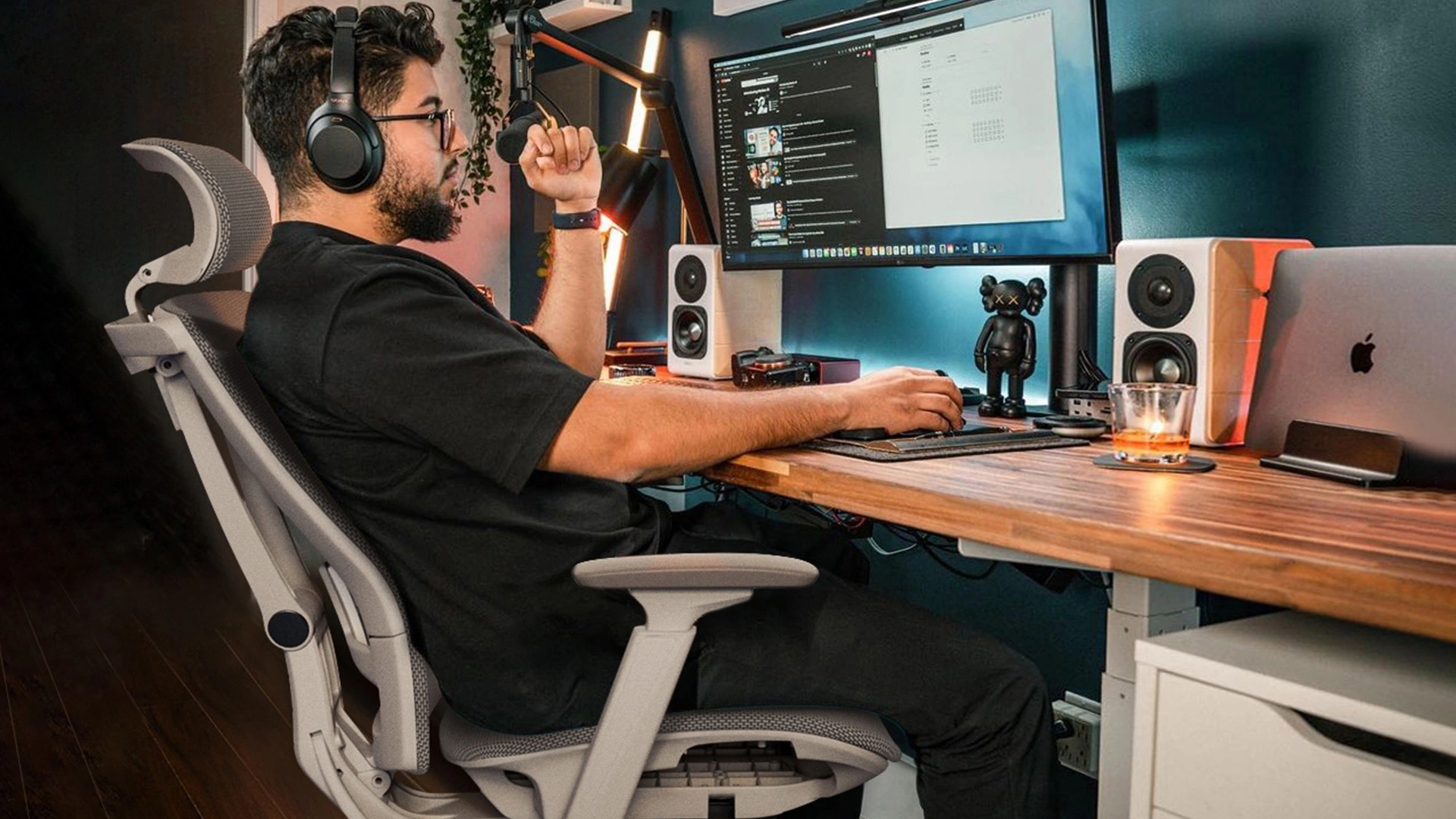
FAQs
1. What does an orthopedic chair do?
An orthopedic chair is designed to support the natural alignment of your spine and relieve pressure on key areas like the lower back, hips, and neck.
These orthopedic chairs for back pain often include adjustable lumbar support, contoured seats, and customizable armrests to reduce strain and promote healthy posture throughout the day.
2. What chair do chiropractors recommend?
Many chiropractors recommend orthopedic chairs or advanced ergonomic chairs that offer adjustable lumbar support, proper seat depth, and a reclining feature to reduce spinal pressure.
3. What is the difference between an ergonomic chair and an orthopedic chair?
Ergonomic chairs are built for general comfort and posture support, while orthopedic chairs take it a step further.
Orthopedic chairs for back pain incorporate medically informed features that target specific pain points, especially the lower back and spine. They’re often recommended for individuals with chronic pain, injuries, or postural conditions.
4. What type of chair is best for seniors?
Seniors often benefit from chairs that provide full-body support, easy adjustability, and soft-yet-firm cushioning.
Look for orthopedic office chairs with high-density foam, accessible recline functions, and lumbar support that can be tailored to individual needs.
5. How long should you sit in an orthopedic chair per day?
While orthopedic chairs support extended sitting, it’s still important to take breaks. Aim to stand or move every 30–60 minutes to reduce spinal compression and promote circulation.
6. Can orthopedic chairs help with sciatica or tailbone pain?
Absolutely. Orthopedic chairs designed with advanced seat padding and lumbar support help relieve pressure in areas like the lower spine and tailbone.
Some even pair well with orthopedic seat cushions for added relief.
Conclusion
A great orthopedic chair is more than just a piece of furniture—it’s a foundation for better posture, focus, and long-term health. Whether you're managing chronic back pain or trying to avoid it, choosing a chair with proper support can be a game-changer.
For those with specific pain concerns, choosing the right chair is even more important. If you suffer from sciatica, consider an office chair for sciatica designed to relieve pressure on the lower back and legs.
If hemorrhoids cause discomfort during long sitting hours, an office chair for hemorrhoids can provide better seat cushioning and airflow. For those experiencing SI joint pain, an office chair for SI joint pain offers proper hip and lumbar alignment to prevent further strain.
If you're equipping an office with ergonomic solutions, consider bulk office chairs for your team. Not only do they offer the support needed for spinal health, but they also help you maintain a cohesive, professional work environment.
With the best orthopedic office chair, you'll not only feel better, but you’ll work better too.
Spread the word
.svg)

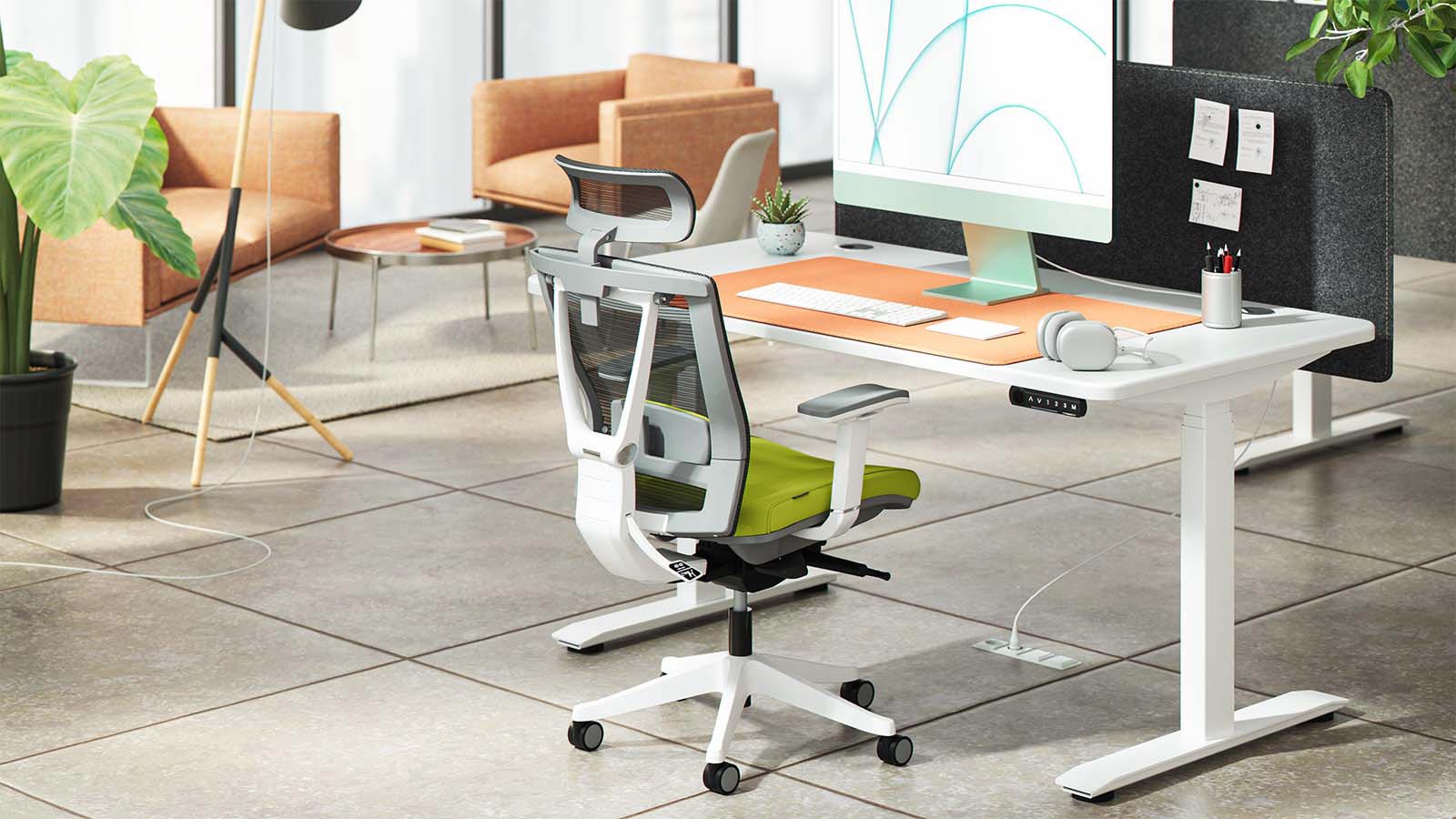

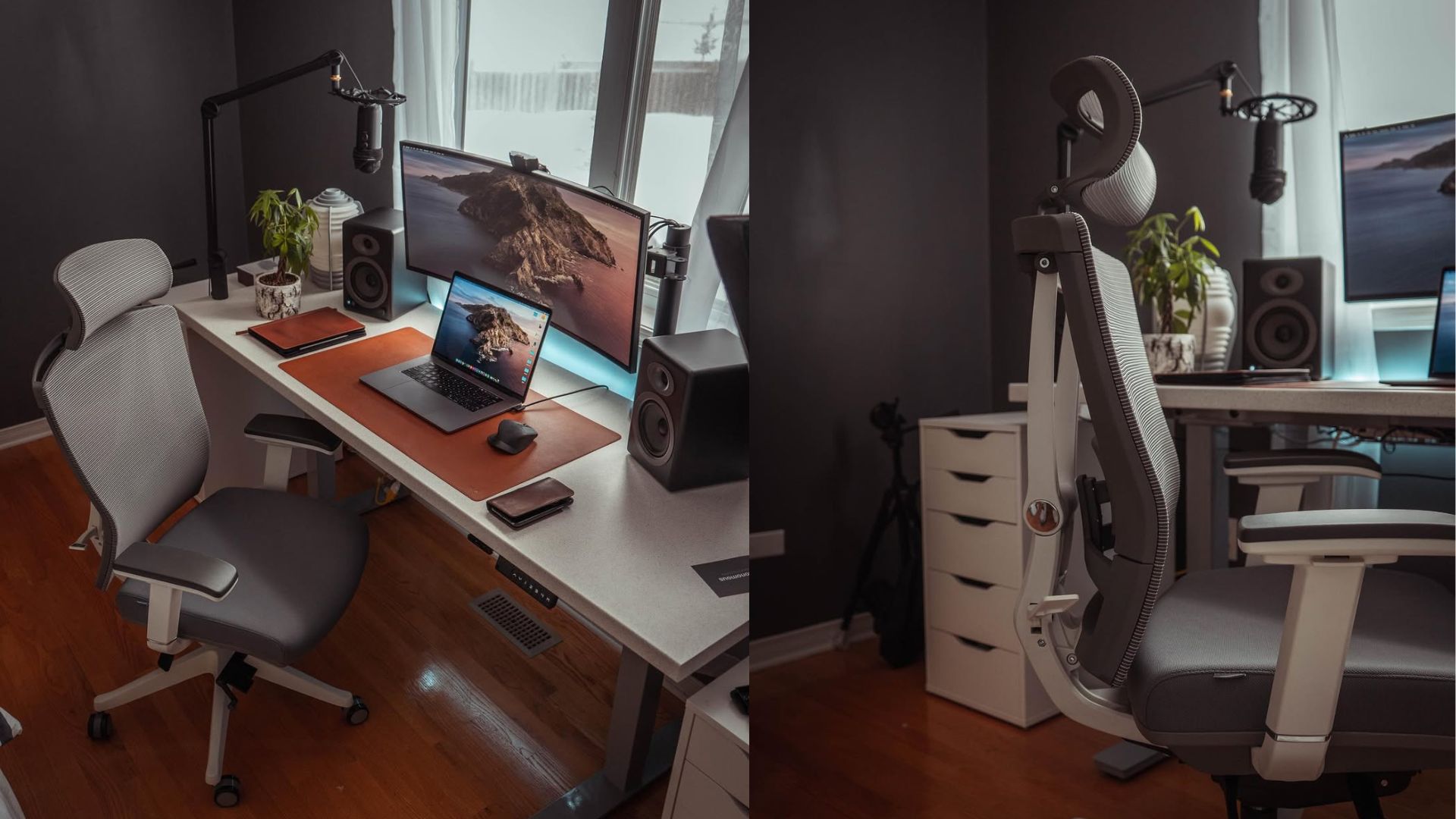
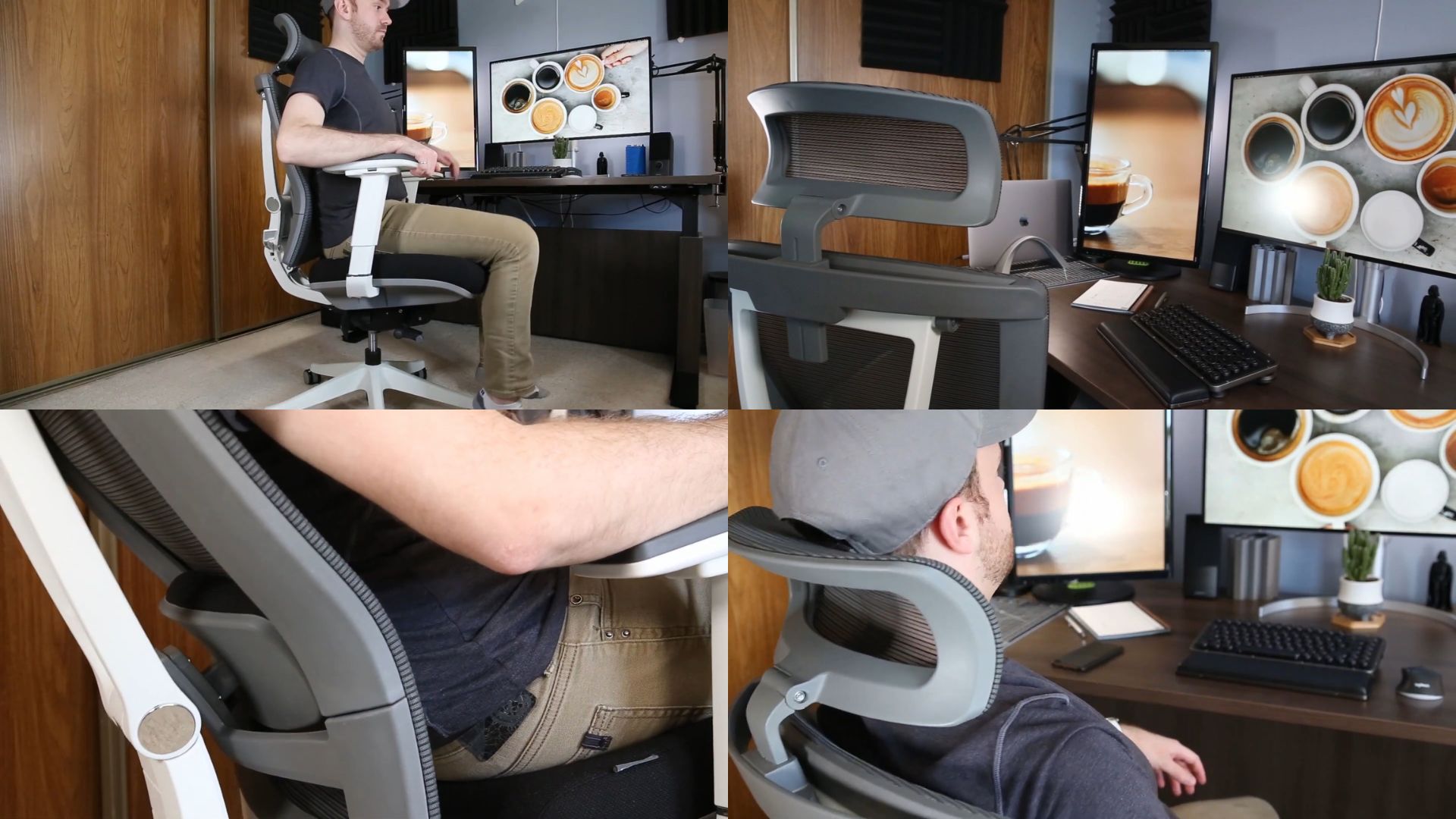
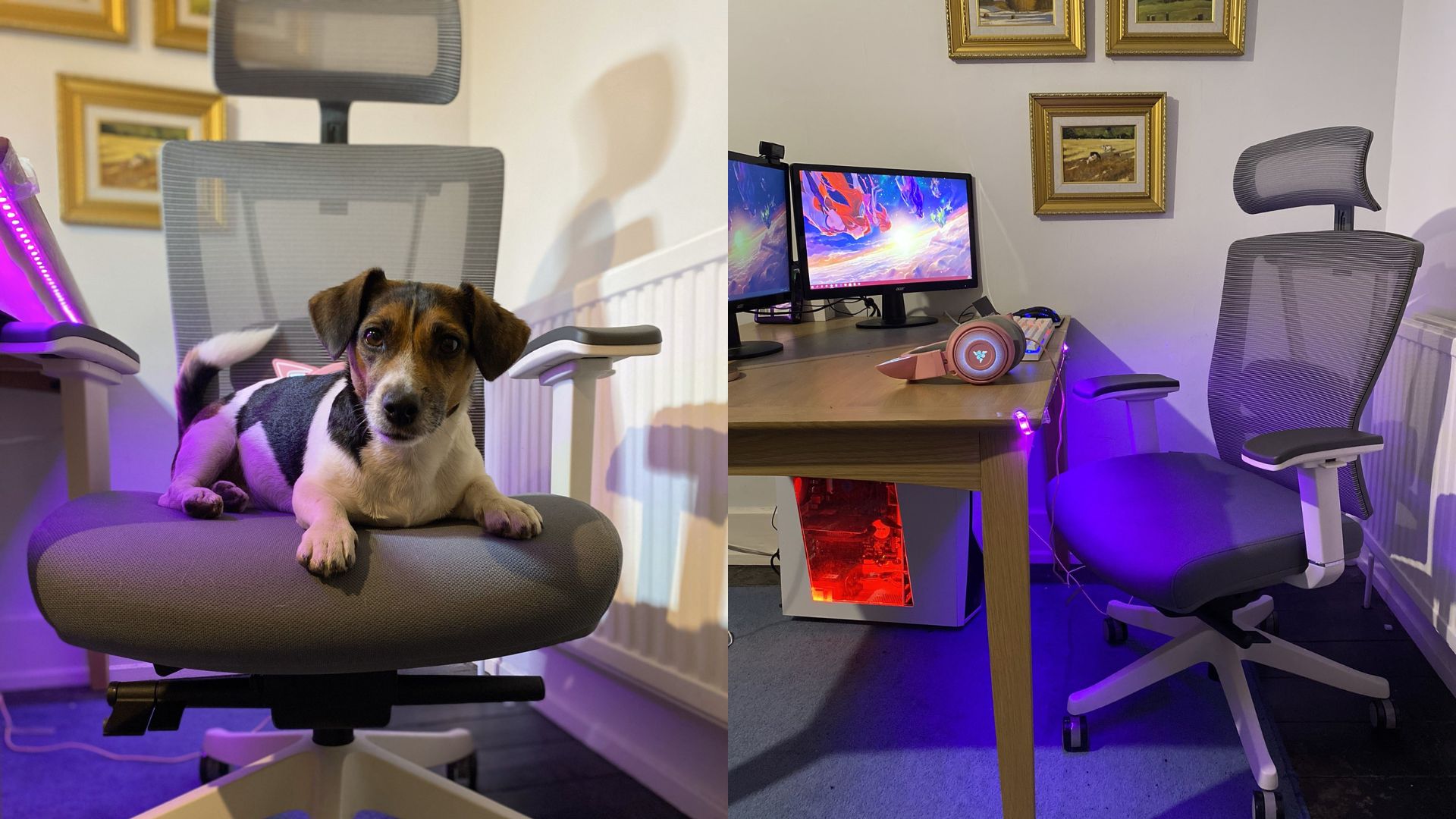
.jpg)
